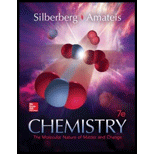
Concept explainers
(a)
Interpretation:
The number of possible different compounds that are formed by changing only the cis-trans arrangements around the double bonds in linoleic acid is to be determined.
Concept introduction:
The cis and trans forms are the types of geometrical or configurational isomers. The cis form indicates that the same functional groups are present on the same side of the carbon-carbon double bond. The trans form indicates that the same functional groups are present on the opposite side of the carbon-carbon double bond. Both isomers have the same formula but a different arrangement of functional groups around the carbon atom.
(b)
Interpretation:
The different compounds that are possible with three double bonds are to be determined.
Concept introduction:
The isomers are the molecules that have the same molecular formula but a different arrangement of atoms. They do not necessarily have similar properties. The phenomenon by which isomers exist is known as isomerism.
The formula to calculate the numbers of possible isomers is as follows:
Here,
Want to see the full answer?
Check out a sample textbook solution
Chapter 11 Solutions
Chemistry: The Molecular Nature of Matter and Change - Standalone book
 ChemistryChemistryISBN:9781305957404Author:Steven S. Zumdahl, Susan A. Zumdahl, Donald J. DeCostePublisher:Cengage Learning
ChemistryChemistryISBN:9781305957404Author:Steven S. Zumdahl, Susan A. Zumdahl, Donald J. DeCostePublisher:Cengage Learning ChemistryChemistryISBN:9781259911156Author:Raymond Chang Dr., Jason Overby ProfessorPublisher:McGraw-Hill Education
ChemistryChemistryISBN:9781259911156Author:Raymond Chang Dr., Jason Overby ProfessorPublisher:McGraw-Hill Education Principles of Instrumental AnalysisChemistryISBN:9781305577213Author:Douglas A. Skoog, F. James Holler, Stanley R. CrouchPublisher:Cengage Learning
Principles of Instrumental AnalysisChemistryISBN:9781305577213Author:Douglas A. Skoog, F. James Holler, Stanley R. CrouchPublisher:Cengage Learning Organic ChemistryChemistryISBN:9780078021558Author:Janice Gorzynski Smith Dr.Publisher:McGraw-Hill Education
Organic ChemistryChemistryISBN:9780078021558Author:Janice Gorzynski Smith Dr.Publisher:McGraw-Hill Education Chemistry: Principles and ReactionsChemistryISBN:9781305079373Author:William L. Masterton, Cecile N. HurleyPublisher:Cengage Learning
Chemistry: Principles and ReactionsChemistryISBN:9781305079373Author:William L. Masterton, Cecile N. HurleyPublisher:Cengage Learning Elementary Principles of Chemical Processes, Bind...ChemistryISBN:9781118431221Author:Richard M. Felder, Ronald W. Rousseau, Lisa G. BullardPublisher:WILEY
Elementary Principles of Chemical Processes, Bind...ChemistryISBN:9781118431221Author:Richard M. Felder, Ronald W. Rousseau, Lisa G. BullardPublisher:WILEY





